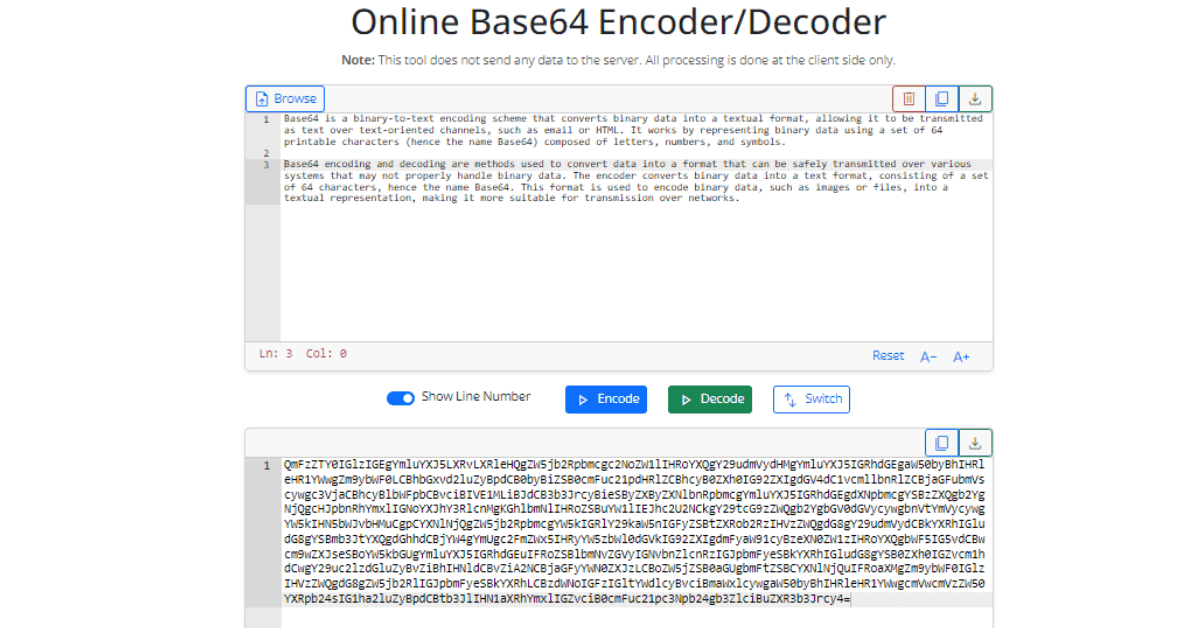What is Base64 Encoding?
One binary-to-text encoding approach is called Base64. It converts binary data into a radix-64 representation so that it can be printed as an ASCII string.
Where is Base64 Encoding used?
- Base64 encoding is frequently used to handle textual data that solely belongs to the 7-bit US-ASCII charset and is intended to be utilized when binary data needs to be transmitted over media that cannot handle it correctly.
- Email (SMTP) is one instance of such a system. It was initially intended to handle plain text data in the 7-bit US-ASCII character set. Despite its eventual expansion to accommodate non-US-ASCII text messages and non-text messages like photos and audio, it is still advised to encrypt the data using an ASCII charset for backward compatibility.
- Any non-ASCII text or binary data can be safely communicated over any communication channel by encoding it in printable ASCII format using Base64 encoding. For instance, your email program Base64 encrypts images and adds the corresponding text to messages you send to friends that contain images.
How does encoding in Base64 operate?
- A 65-character subset of the US-ASCII charset is used for Base64 encoding. The 65-character subset’s first 64 characters are mapped to a corresponding 6-bit binary sequence (26 = 64). For padding, the extra 65th character (=) is utilized.
- Every 6-bit binary sequence, ranging from 0 to 63, has a Base64 alphabet allocated to it. During the encoding process, this mapping between the matching Base64 alphabet and the 6-bit binary sequence is used.
- An 8-bit input stream is fed into the Base64 encoding method. By concatenating three 8-bit bytes, it arranges the input into 24-bit groups and processes it from left to right. Next, four concatenated 6-bit groups are formed from these 24-bit groups. Lastly, by using the Base64 alphabet table shown above, each 6-bit group is transformed into a single Base64 character.
- In cases where the final input contains fewer than 24 bits, an integral number of 6-bit groups is formed by adding zero bits (on the right).
- There are precisely eight bits in the final input segment: Two 6-bit groups are created by adding four zero bits. The Base64 index table is used to translate each 6-bit group into the final Base64-encoded character. Two pad (=) characters are then added to the output after that.
- The final input segment has precisely 16 bits in it: Three 6-bit groups are created by adding two zero bits. The three 6-bit groups are each translated into the matching Base64 alphabet. Ultimately, the output is completed with a single pad (=) character.
How to Use Online Base64 Encoder/Decoder Tool Properly?
- Enter, paste, or upload the desired data into the editor of online Base64 encoder. Using the corresponding tabs or options on our tool’s interface, you can choose to encode or decode data. You are not required to create an account.
- Choose the desired action by clicking the “Encode” or “Decode” button.
- After quickly processing the data, the tool will show the encoded or decoded output in the output field you provided.
- Import the output into your desired application or copy it to your clipboard.
Conclusion
The SMTP protocol imposed certain antiquated constraints on email communications; Base64 was initially proposed to circumvent these limits. We still use base64 almost everywhere since the final alphabet is very narrow. Many situations involving the combination of textual and non-textual data benefit from this.

